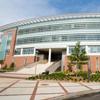news
Next Generation Disaster Communications Technology Now a Reality With LifeNet
Primary tabs
Georgia Tech’s College of Computing today announced that a group of its students and their professor have been awarded a Sustainable Vision Grant from the National Collegiate Inventors and Innovators Alliance (NCIIA) to move LifeNet, a flexible ad hoc communications network, from the classroom into the marketplace. LifeNet allows one person to share network connectivity with others via their computer and is especially important for providing instant communications connectivity in post-disaster situations or in rural and developing areas. NCIIA Sustainable Vision Grant funds are awarded to education programs where breakthrough technologies are created and then commercialized for those people living in poverty in the US and abroad.
A lack of communication infrastructure is one of the major hurdles in responding to a disaster. LifeNet is a far-reaching, infrastructure-less wireless network that is formed out of consumer electronic devices such as laptops or smartphones. Each device acts as a host and a router, making a centralized governing body unnecessary. LifeNet offers a network that can grow incrementally by allowing any user to connect and disconnect from the network. The computers will stay connected as long as they are connected to at least one other device in the ad hoc network, thus creating a continuous flow of communication.
“Imagine the hours immediately following a disaster like the Haiti earthquake or even 9/11. Communication is the key to getting timely help which can ultimately save lives,” said Hrushikesh Mehendale, team leader for the student-led class project. “Connectivity requires infrastructure; but when it breaks down, we need an easy, affordable solution. We are grateful the NCIIA saw the potential implications for LifeNet in these situations and in developing countries.”
LifeNet is based on a new routing idea for highly transient networks first formulated by former student Ashwin Paranjpe and Professor Santosh Vempala two years ago, and developed into a usable solution by students in the College of Computing’s Computing for Good (C4G) class during fall 2009. The course is an educational movement that combines technology with activism. C4G centers on the concept of applying computing ideas to important societal problems via projects to improve quality of life where it is most needed. Many of today’s societal problems stem from a lack of information or a lack of resources, and LifeNet is one project that is starting to come to fruition.
The NCIIA, focused on taking university projects out of the classroom and into the market, awarded the team a $44,000 Sustainable Vision Grant, which is granted to social progress technologies with impact on people in poverty. Academics, venture capitalists and international development leaders choose the grant recipients. The NCIIA also requires winners to attend workshops to help make each project more marketable. At the workshop, teams learn how to build a business plan, financials, marketing and the art of the 30-second pitch. LifeNet was one of the projects chosen out of ten award winners to receive continued support and consultation from NCIIA.
“I was inspired by the team’s technology skills, but more so by their impactful, innovative ideas,” said Jennifer Jackson, NCIIA grants manager. “The team addressed this huge need with an entrepreneurial spirit. We are excited to see their progress and help make this technology a reality in the marketplace.”
Next for LifeNet is thorough testing and deployment. The NCIIA will help the team develop and create a nonprofit company to deliver the technology. Part of the team will travel to India to pilot the program and others are currently in talks with government agencies for the usefulness of the network in other areas. They will also attend a second conference later this month to further explore the science, business and technology opportunities of the project. A fully mature, reliable product is planned for June availability.
LifeNet Specifications
LifeNet, a flexible ad-hoc communications network, creates connectivity in remote, developing or disaster locations where communications is often unreliable or non-existent. It is an infrastructure-less, wireless network that can cover areas from a few hundred meters to a few kilometers in diameter and is formed out of consumer devices or nodes. Every node in the LifeNet network acts as a host and a router at the same time, making a centralized governing body unnecessary for operation. The network created by LifeNet can grow or decrease incrementally as users can connect or disconnect at their own will. Moreover, all devices across a LifeNet network can access the Internet if one device has connectivity. LifeNet is open source software using the free Wi-Fi spectrum and commodity Wi-Fi protocol for link layer communication and is a self-configuring Linux kernel module.
Experiments indicate that the system functions despite changes in topology and traffic, performance improves as the network scales up, and is easy to configure and maintain. Tests have been successful within a half-mile radius, even in urban settings with buildings, trees and other obstructions.
Groups
Status
- Workflow status: Published
- Created by: Mike Terrazas
- Created: 03/24/2010
- Modified By: Fletcher Moore
- Modified: 10/07/2016
Categories
Keywords

